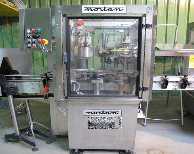

The smaller the size of a pixel, the higher the resolution of the image will be and the clearer the image will be. A pixel is a unit of a digital image, but overall resolution depends upon the size of the pixels (and the viewing distance). The best way to think about how resolution works together with the number of pixels captured in an image, is that “the number of pixels is determined by the capture device, but pixels have no fixed size“. But in this article, the main type of resolution concept I want to introduce is called pixels per inch, otherwise known as ppi. The higher the resolution, the more detail there is. Broadly speaking though, resolution is basically referring to the detail an image has. Resolution has many different meanings, and is quite complex when you look into it. The other main player in the story is resolution. They are the raw material of our images, whether we are are printing or just displaying the image on a screen. So, pixels are finite and are linked to the capture device. The top of the line Phase One Digital Camera back, the IQ180, captures a staggering 10328 x 7760 pixels (over 80 million pixels!). So if, in spite of my experience and research, I am misinformed or mistaken about some point or other, I welcome any corrections.Ī Nikon D800 captures a whopping 7,360 × 4,912pixels (a 36.3MP camera). And I certainly don’t profess to knowing everything there is to know about pixels either, particularly about pre-press and the printing industry. While I can read and write HMTL and CSS, I am more a designer than a coder, and I don’t profess to be know everything about the technical intricacies of web design. I also design, host and maintain WordPress websites. I have been fiddling with cameras my whole life, and have taught photography and digital imaging at local colleges and independently for the last ten years (visit iTeachphotographers for more on that), and I feel like I have a reasonably authoritative voice on the topic. Huge caveat here: My primary field of knowledge is in photography. But a lot of people have a need for basic foundational skills when it comes to understanding and resizing digital images for various purposes. And it’s also one where there is an awful lot of misinformation floating around, even from professionals. The topic of resizing images for the web is a relatively simple, yet ridiculously complex one, at the same time. How do I get rid of ON1 RAW and re-establish ON1 Effect 10 on PSE so that PSE doesn't crash? BTW, using the ON1 Effstand alone, sends the treated image to the folder from whence it came.Website image size guidelines 2021 – Updated: 04 Feb, 2021 I can find all the files and directories related to ON1 Effect and RAW using file finder Everything, however when going to the Control Panel or Revo Uninstaller to uninstall ON1 RAW or ON1 Effect 10, neither is listed. However, ON1 Effect 10 now only works as a stand alone. I then select Quit, and the screen reverts back to PSE.but PSE has now crashed and I have kill the PSE process in order to close PSE. Selecting ON1 Effects opens a screen that for ON asking me to buy. Now when I go to File Automation Tools, ON1 Develop 2017, ON1 Effects 2017 and ON1 REsize show up, Going to Filter, ON1 Develop 2017 and ON1 Effects 2017 show up.

As a general wise-ass, I then dl'd ON and installed.big mistake, I think. It did appear in PSE under File Automation Tools and Filer. I downloaded and successfully installed ON1 EffFree.


 0 kommentar(er)
0 kommentar(er)
